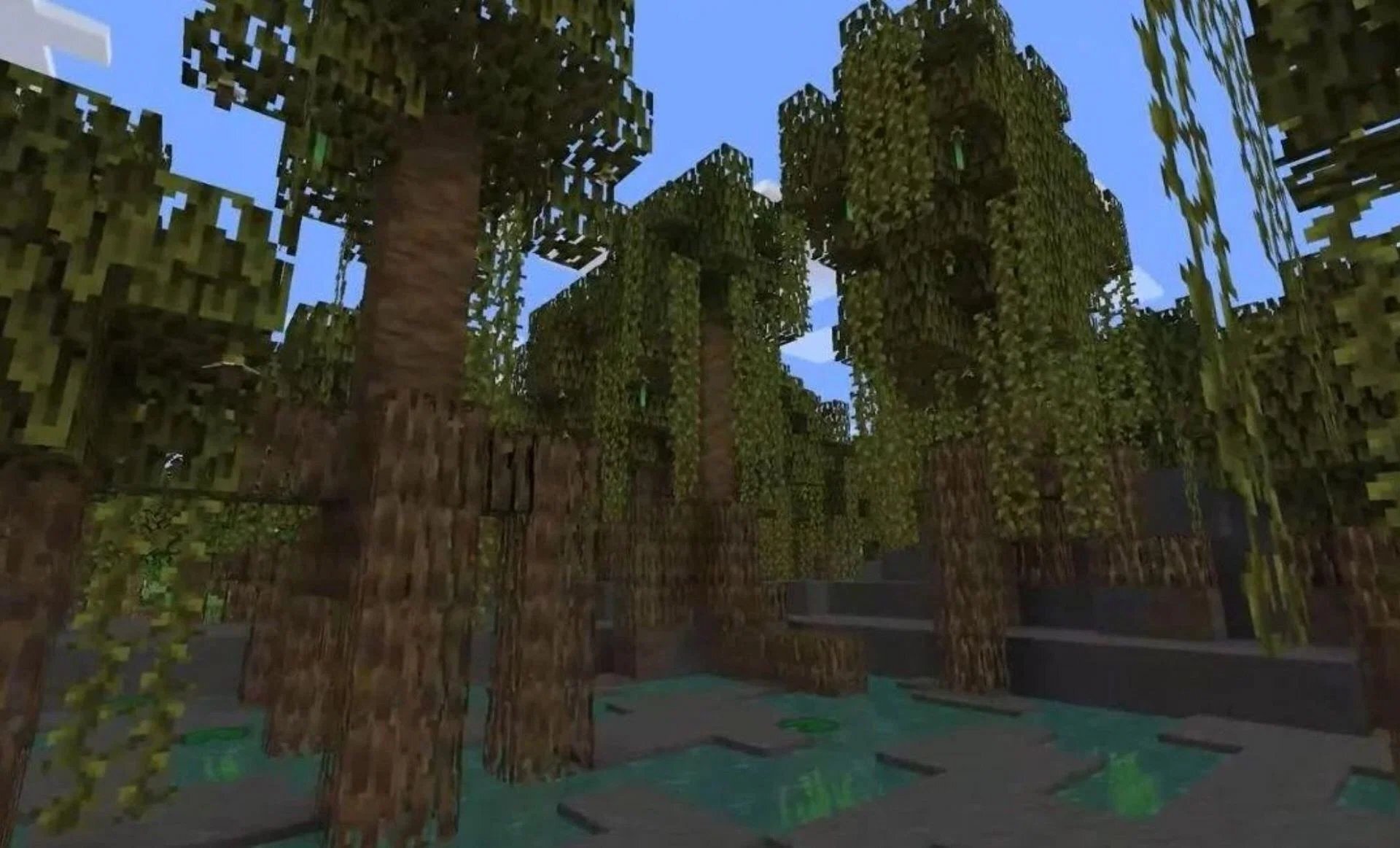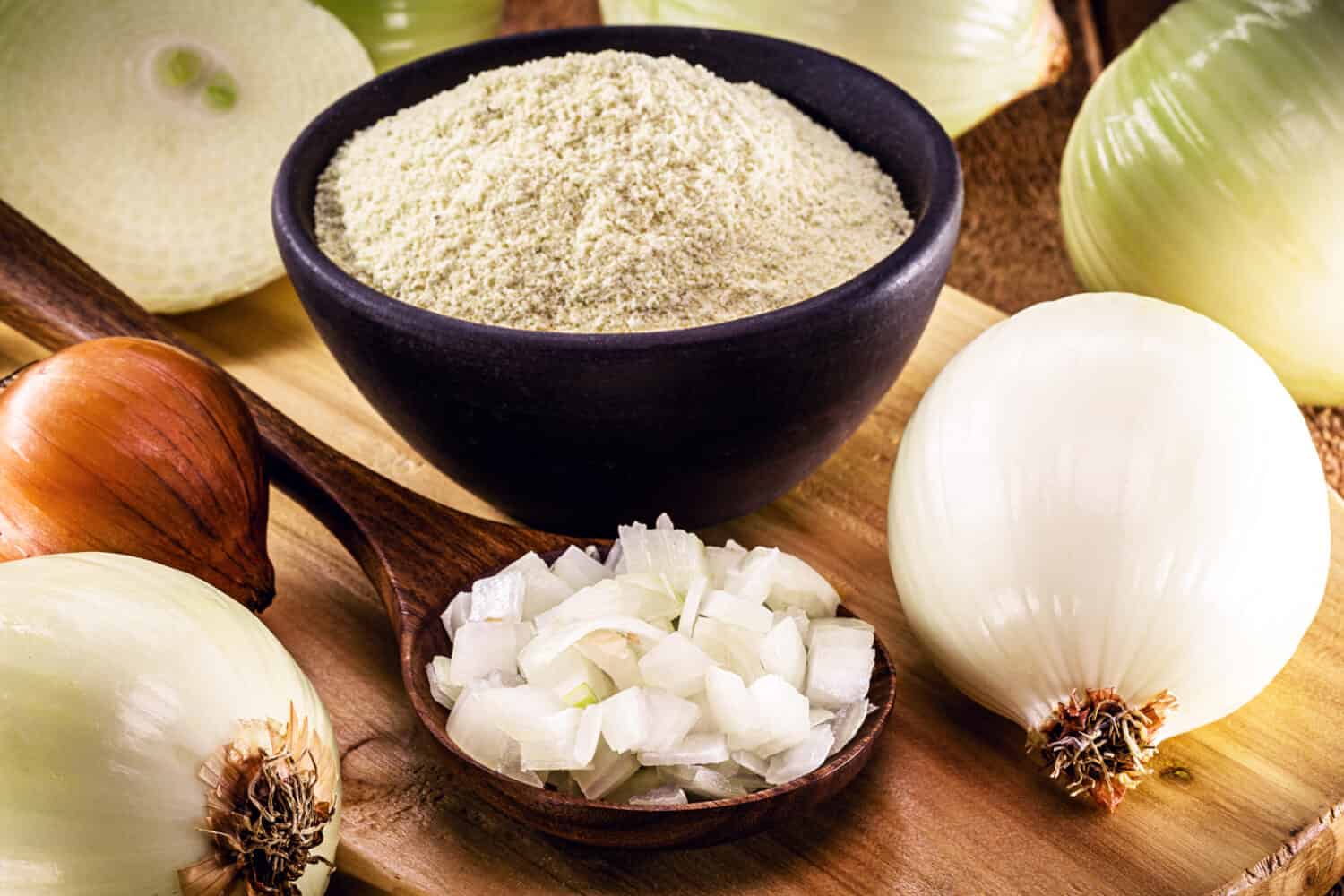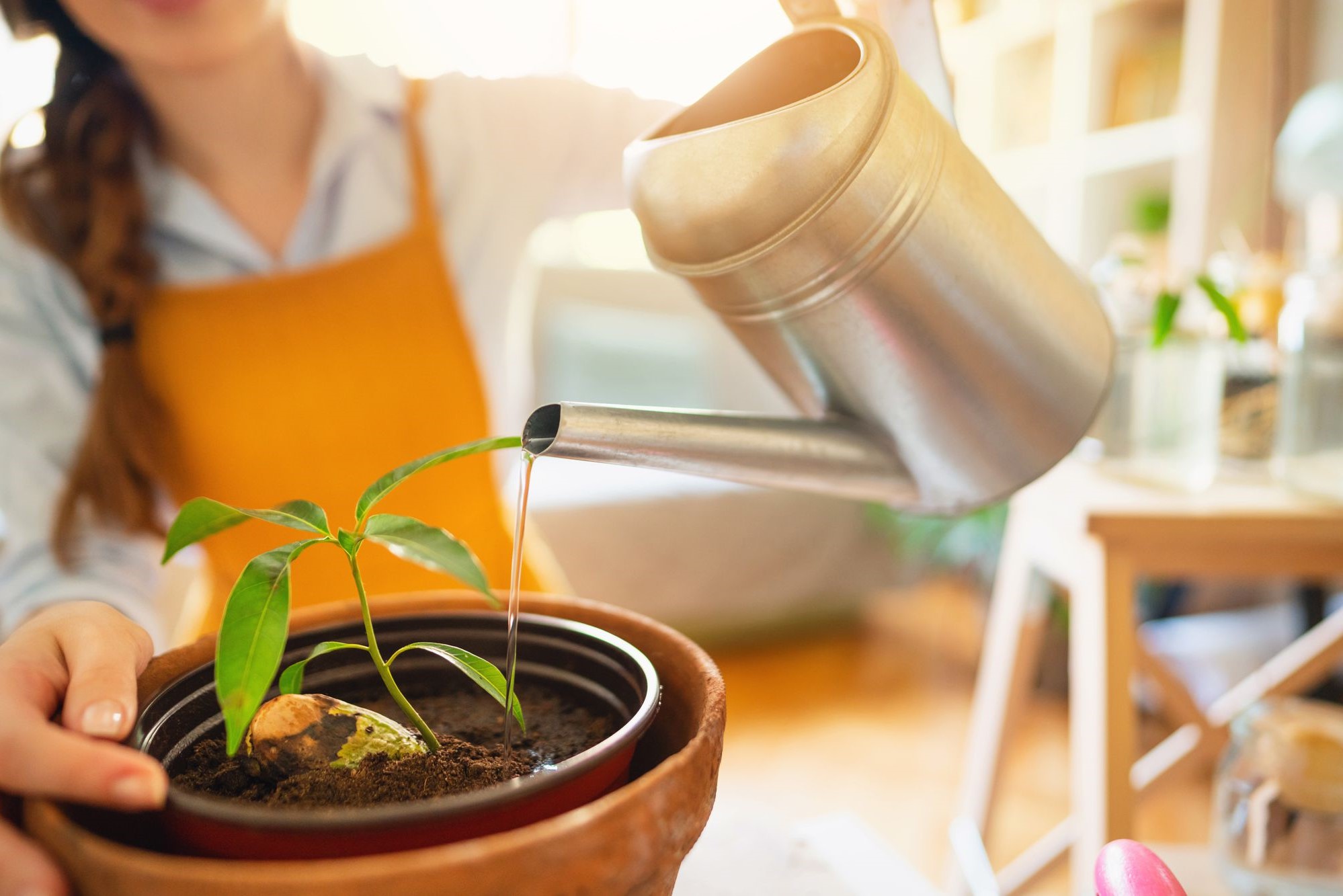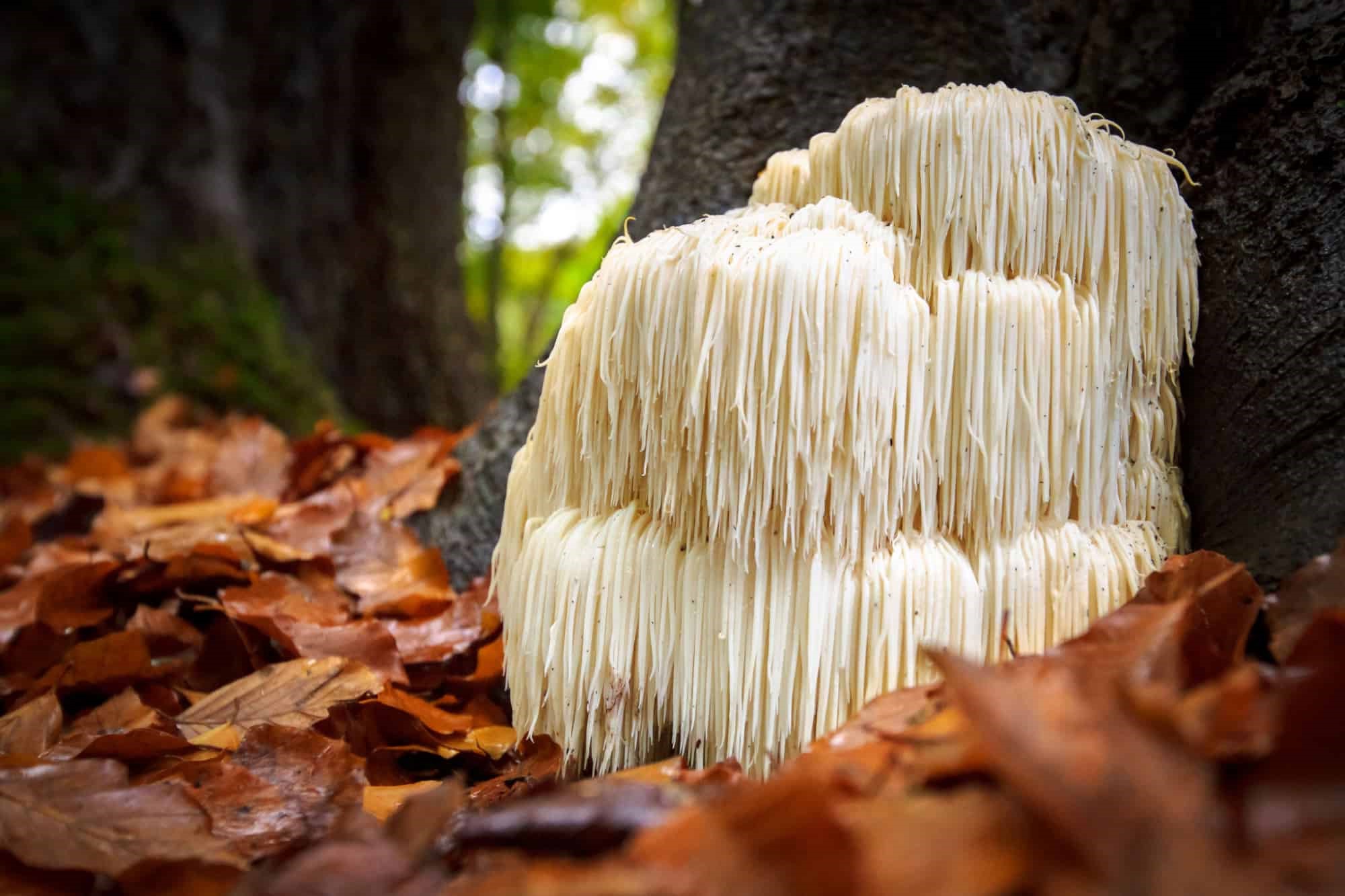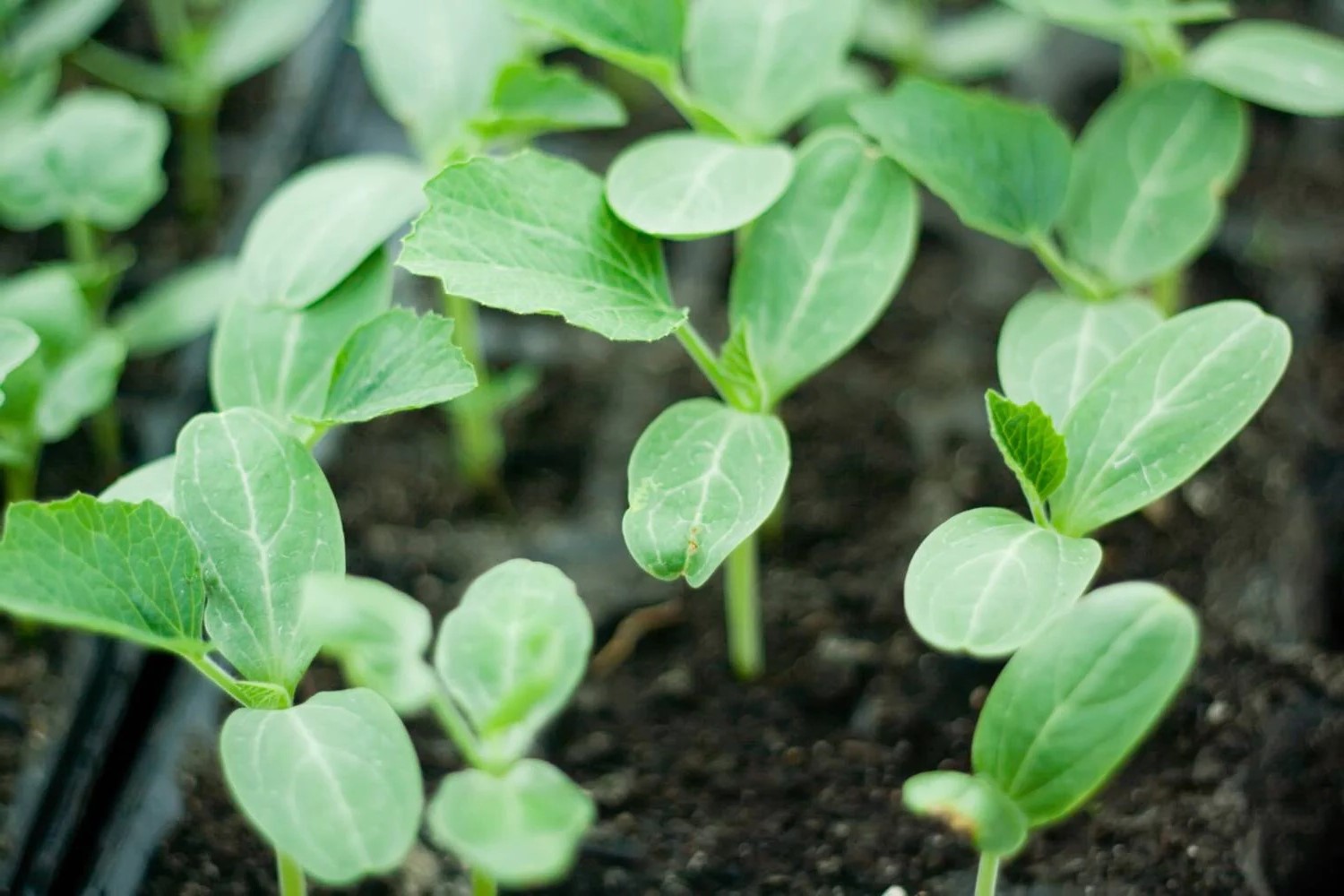Home>Home and Garden>How To Successfully Grow Onions
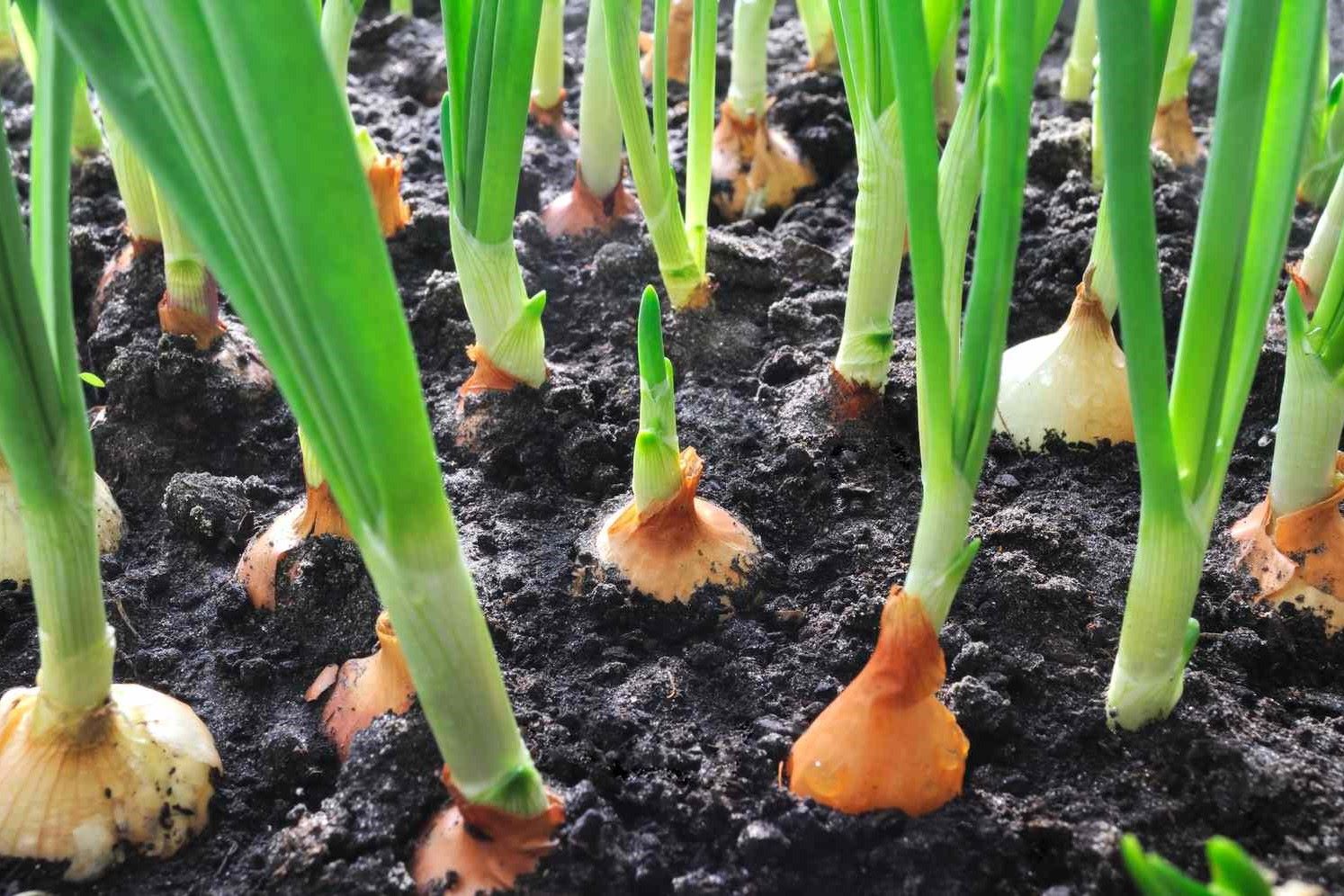

Home and Garden
How To Successfully Grow Onions
Published: March 2, 2024
Learn the best tips for growing onions at home and in your garden. Discover expert advice for a successful onion harvest in your home and garden.
(Many of the links in this article redirect to a specific reviewed product. Your purchase of these products through affiliate links helps to generate commission for Noodls.com, at no extra cost. Learn more)
Table of Contents
Introduction
Growing onions can be a rewarding and fulfilling experience for any home gardener. Whether you're a seasoned green thumb or just starting out, cultivating your own onions can bring a sense of accomplishment and provide a fresh supply of this versatile and flavorful vegetable for your culinary creations.
Onions are a staple ingredient in countless recipes, adding depth and savory goodness to dishes from various cuisines around the world. From soups and stews to stir-fries and salads, the culinary uses for onions are virtually endless. By growing your own onions, you can ensure a fresh and organic supply, free from the pesticides and preservatives often found in store-bought varieties.
In addition to their culinary appeal, onions are relatively low-maintenance plants, making them an ideal choice for novice gardeners. With the right guidance and a bit of care, you can successfully grow onions in your own backyard, patio, or even a sunny windowsill.
This comprehensive guide will walk you through the essential steps of growing onions, from selecting the right variety for your needs to harvesting and storing your homegrown bounty. By following these tips and techniques, you'll be well on your way to cultivating robust, flavorful onions that will elevate your cooking and bring a sense of pride to your gardening endeavors. So, roll up your sleeves, grab your gardening tools, and let's dive into the wonderful world of growing onions!
Choosing the Right Onion Variety
When it comes to choosing the right onion variety for your garden, it's essential to consider your local climate, growing season, and intended use for the onions. With a wide array of onion types available, each with its unique flavor profile, size, and storage capabilities, selecting the most suitable variety is crucial for a successful harvest.
-
Short-Day, Long-Day, or Intermediate-Day Onions: Onions are categorized based on the number of daylight hours required to form bulbs. Short-day onions thrive in southern regions with milder winters, needing 10-12 hours of daylight. Long-day onions are best suited for northern climates with longer daylight hours (14-16 hours), while intermediate-day onions are versatile and adaptable to a broader range of latitudes.
-
Sweet Onions: Known for their mild and sweet flavor, sweet onions are a popular choice for fresh consumption. Varieties such as Vidalia, Walla Walla, and Maui are sought after for their low pungency and delightful taste, making them ideal for salads and sandwiches.
-
Storage Onions: If you're aiming for a bountiful harvest that can be stored for extended periods, consider planting storage onion varieties like Copra, Red Wethersfield, or Yellow Globe. These onions have a higher sulfur content, contributing to their excellent storage potential.
-
Scallions and Green Onions: For those who prefer the mild, tender shoots of young onions, scallions and green onions are the perfect choice. These varieties can be harvested early and used fresh in a variety of dishes, adding a delightful oniony crunch to salads, soups, and garnishes.
-
Red, White, or Yellow Onions: Each color category offers distinct flavor profiles, with red onions providing a mild sweetness, white onions offering a crisp and slightly sweet taste, and yellow onions delivering a robust, pungent flavor. Consider the culinary applications when selecting the color of your onions.
By carefully considering these factors and your personal preferences, you can choose the right onion variety that aligns with your growing conditions and culinary aspirations. Whether you opt for sweet, storage, or colorful onions, selecting the appropriate variety sets the stage for a successful onion-growing venture.
Preparing the Soil
Preparing the soil is a crucial step in setting the foundation for a thriving onion crop. Onions thrive in well-draining, fertile soil with a slightly acidic pH level ranging from 6.0 to 7.0. Here's a detailed guide to preparing the soil for optimal onion growth:
Soil Testing:
Before embarking on the soil preparation process, conducting a soil test can provide valuable insights into the soil's composition and nutrient levels. Many local agricultural extension offices offer soil testing services, enabling you to determine the pH level and identify any deficiencies that may need to be addressed.
Soil Amendments:
Based on the results of the soil test, it may be necessary to amend the soil to create an ideal growing environment for onions. Adding organic matter such as compost, well-rotted manure, or peat moss can improve soil structure, enhance drainage, and boost fertility. Additionally, incorporating organic materials contributes essential nutrients to the soil, promoting healthy root development and robust onion bulb formation.
Weed Removal:
Prior to planting onions, it's essential to clear the designated area of any weeds or unwanted vegetation. Weeds can compete with onions for nutrients and water, potentially hindering their growth. Removing weeds by hand or using a hoe helps create a clean and weed-free planting bed, giving your onion seedlings the best chance to thrive without unnecessary competition.
Soil Loosening:
Loose, well-aerated soil is advantageous for onion cultivation, as it allows for proper root penetration and bulb expansion. Using a garden fork or tiller, gently loosen the soil to a depth of 6 to 8 inches, breaking up any compacted areas and creating a loose, friable texture that facilitates root growth and water infiltration.
Organic Mulching:
Applying a layer of organic mulch, such as straw or shredded leaves, around the onion plants after they are established can help conserve soil moisture, suppress weed growth, and regulate soil temperature. Mulching also contributes to soil health by gradually decomposing and enriching the soil with organic matter, fostering a favorable environment for onion growth and development.
By diligently preparing the soil and creating an optimal growing environment, you can lay the groundwork for a successful onion harvest. With well-amended, weed-free soil that promotes healthy root development and bulb formation, your onions are poised to thrive and reward you with a plentiful yield of flavorful, homegrown goodness.
Planting Onions
Planting onions is a pivotal stage in the journey of cultivating these versatile and flavorful vegetables. By following the proper planting techniques and timing, you can establish a strong foundation for robust onion growth and a bountiful harvest. Here's a detailed guide to planting onions, from selecting the right planting method to ensuring optimal spacing and depth for your onion sets or seedlings.
Read more: How To Cut Green Onions
Selecting Planting Method:
Onions can be grown from seeds, sets (small bulbs), or seedlings, each offering distinct advantages depending on your preferences and growing conditions. Planting onion sets is a popular choice for beginners, as they are easy to handle and less prone to disease. Alternatively, starting onions from seeds provides a wider selection of varieties and allows for greater control over the growing process. Seedlings, often available at nurseries or garden centers, offer a head start in the growing season, enabling earlier harvests.
Timing and Spacing:
The timing of planting onions is critical, as it directly impacts the size and quality of the bulbs. In regions with milder winters, onions can be planted in the fall for overwintering, resulting in early spring harvests. For spring planting, it's essential to wait until the soil is workable and the risk of frost has passed. When planting onion sets or seedlings, space them approximately 4-6 inches apart in rows that are 12-18 inches apart, allowing ample room for the bulbs to develop and expand.
Planting Depth:
Whether planting onion sets or seedlings, the depth at which they are planted plays a significant role in their establishment and subsequent growth. When planting sets, place them in the soil with the pointed side facing up, at a depth of approximately 1 inch. For seedlings, gently transplant them into the prepared soil, ensuring that the roots are well-covered and the top of the bulb or seedling is level with the soil surface. Proper planting depth promotes secure root establishment and encourages healthy foliage and bulb development.
Soil Moisture and Aftercare:
After planting, it's crucial to provide adequate moisture to support the initial growth of the onion sets or seedlings. Water the newly planted onions gently but thoroughly, ensuring that the soil is evenly moist without becoming waterlogged. As the onions continue to grow, maintain consistent moisture levels, especially during dry periods, to support healthy bulb formation. Additionally, keeping the planting area free of weeds and providing a balanced fertilizer application can further promote robust onion growth and development.
By adhering to these planting guidelines and best practices, you can set the stage for a successful onion-growing experience. Whether you opt for sets, seeds, or seedlings, the proper timing, spacing, and planting depth are essential factors in establishing healthy onion plants that will yield a flavorful and abundant harvest. With careful attention to detail and a nurturing approach, you can look forward to a thriving onion crop that will enhance your culinary creations and bring a sense of satisfaction to your gardening endeavors.
Read more: How To Cook Liver And Onions
Watering and Fertilizing
Proper watering and fertilizing practices are integral to the successful cultivation of onions, ensuring optimal growth, bulb development, and overall plant health. By understanding the specific needs of onions and implementing appropriate watering and fertilization strategies, you can nurture robust plants that yield flavorful and substantial harvests.
Watering Guidelines
Onions require consistent moisture throughout their growth cycle, particularly during bulb formation, to support healthy development and prevent issues such as splitting or bolting. Adequate watering is especially crucial during dry periods, as onions have shallow root systems and are susceptible to moisture stress.
When establishing a watering routine for onions, it's essential to strike a balance between providing sufficient moisture and avoiding waterlogged conditions. Overly wet soil can lead to root rot and other detrimental conditions, while insufficient moisture can hinder bulb expansion and result in smaller, less flavorful onions.
To maintain optimal soil moisture levels, consider the following watering guidelines:
-
Consistent Moisture: Aim to keep the soil consistently moist but not waterlogged, particularly during the critical stages of bulb formation. Regular monitoring of soil moisture levels and adjusting watering frequency based on weather conditions is essential.
-
Deep Watering: When irrigating onions, focus on delivering deep, thorough watering to encourage root growth and minimize surface evaporation. Deep watering promotes the development of strong, resilient root systems that support the uptake of essential nutrients and water.
-
Morning Watering: Watering onions in the morning allows foliage to dry during the day, reducing the risk of fungal diseases. Avoid overhead watering in the evening, as prolonged leaf wetness can create favorable conditions for fungal pathogens.
Fertilization Practices
Appropriate fertilization is vital for supplying onions with the essential nutrients they need to thrive and produce robust, flavorful bulbs. Understanding the nutrient requirements of onions and selecting suitable fertilizers can significantly impact their overall growth and yield.
Key considerations for fertilizing onions include:
-
Soil Testing: Conduct a soil test to assess nutrient levels and pH, guiding the selection of fertilizers and amendments tailored to the specific needs of your onion crop. Soil testing provides valuable insights into existing nutrient deficiencies and helps prevent over-fertilization, which can negatively impact plant health.
-
Balanced Fertilizers: Utilize balanced fertilizers with a moderate to low nitrogen content, as excessive nitrogen can promote lush foliage growth at the expense of bulb development. Phosphorus and potassium are crucial for root development and bulb formation, making them essential components of onion fertilization.
-
Application Timing: Apply fertilizers at the appropriate stages of onion growth, focusing on providing nutrients when the plants are actively establishing roots and forming bulbs. A well-timed application of fertilizer supports steady growth and encourages the development of healthy, sizable onions.
By adhering to these watering and fertilization guidelines, you can provide onions with the optimal growing conditions they need to flourish. Consistent moisture management and strategic fertilization practices contribute to the development of robust, flavorful onions that will enrich your culinary endeavors and reward your dedication to successful home gardening.
Managing Pests and Diseases
Maintaining vigilance against potential pests and diseases is essential for safeguarding the health and productivity of your onion crop. By implementing proactive measures and timely interventions, you can mitigate the risks posed by common pests and diseases, ensuring that your onions thrive and reach their full potential.
Read more: How To Grow A Mango Seed
Pest Management
-
Onion Maggots: These small, white, legless larvae can cause significant damage to onion plants by feeding on the roots and bulbs. To deter onion maggots, consider using floating row covers to prevent adult flies from laying eggs near the plants. Additionally, practicing crop rotation and removing any infested plant debris can help disrupt the life cycle of these pests.
-
Thrips: These tiny, slender insects can inflict damage by piercing onion leaves and extracting sap, leading to silvering or bronzing of the foliage. To manage thrips, consider introducing natural predators such as ladybugs or lacewings, or utilize insecticidal soaps to control infestations while minimizing harm to beneficial insects.
-
Onion Flies: Adult onion flies lay eggs at the base of onion plants, and their larvae can cause extensive damage by tunneling into the bulbs. Employing yellow sticky traps and maintaining good garden hygiene can help reduce the presence of onion flies and limit their impact on your crop.
Disease Prevention
-
Downy Mildew: This fungal disease can manifest as yellowing and wilting of onion foliage, often accompanied by a fuzzy, grayish mold on the undersides of leaves. To prevent downy mildew, ensure proper air circulation by spacing plants adequately and avoiding overhead watering, which can create favorable conditions for disease development.
-
Botrytis Leaf Blight: Characterized by the formation of grayish-brown lesions on onion leaves, botrytis leaf blight can weaken plants and diminish bulb quality. Implementing a regular inspection routine and promptly removing any infected plant material can help contain the spread of this disease and minimize its impact on your onion crop.
-
Pink Root: This soilborne fungus can lead to the discoloration and decay of onion roots, ultimately impeding nutrient uptake and stunting plant growth. To mitigate the risk of pink root, practice crop rotation and select well-draining planting sites to reduce the likelihood of fungal proliferation.
By remaining attentive to the signs of potential pest infestations and diseases, you can take proactive steps to protect your onion crop and maintain its vigor throughout the growing season. Implementing integrated pest management practices, promoting soil health, and fostering resilient plant growth are key components of a comprehensive approach to pest and disease management in your onion garden.
Harvesting Onions
Harvesting onions is a gratifying culmination of the efforts invested in nurturing these versatile and flavorful vegetables. As the growing season progresses, it's essential to monitor the signs indicating that your onions are ready for harvest, ensuring that you gather them at the peak of their flavor and quality.
Signs of Maturity:
Determining the optimal time for harvesting onions involves observing key indicators of maturity. When the tops of the onion plants begin to yellow and topple over, it signals that the bulbs have reached maturity and are ready for harvesting. Additionally, gently pressing the neck of the onion to assess its firmness can provide valuable insight into its readiness for harvest. A mature onion will exhibit a firm, well-defined neck, indicating that it has completed the bulb development process and is primed for harvesting.
Read more: How To Determine The Shelf Life Of Onions
Harvesting Technique:
To harvest onions, carefully loosen the soil around the bulbs using a garden fork or trowel, taking care not to damage the delicate outer layers. Once the bulbs are unearthed, gently lift them from the soil, allowing any excess dirt to fall off naturally. It's advisable to harvest onions on a dry, sunny day to facilitate the curing process and minimize the risk of rot or mold formation.
Curing and Drying:
After harvesting, it's crucial to cure the onions to enhance their storage potential and flavor. Lay the harvested onions in a well-ventilated, shaded area with good air circulation, such as a covered porch or a well-ventilated garage. Allow the onions to cure for approximately two to three weeks, during which time the outer skins will dry and the necks will further tighten, contributing to improved storage capabilities.
Storing the Harvest:
Once the onions have completed the curing process, trim the roots and tops to approximately one inch, further promoting their longevity in storage. Select onions that are free from blemishes, bruises, or signs of decay for long-term storage, as these imperfections can compromise the quality of the entire harvest. Store the cured onions in a cool, dry, and well-ventilated location, such as a cellar or pantry, ensuring that they are kept away from direct sunlight and excessive moisture.
Enjoying the Fruits of Your Labor:
With your freshly harvested and cured onions neatly stored, you can look forward to incorporating their robust flavor and culinary versatility into an array of delightful dishes. From savory soups and stews to vibrant salads and savory sautés, homegrown onions add a layer of depth and richness to your culinary creations, elevating the flavors and aromas of your favorite recipes.
By embracing the art of harvesting, curing, and storing onions, you can savor the rewards of your gardening endeavors throughout the year, relishing the vibrant flavors and nourishing qualities of your homegrown bounty.
Read more: How To Grow Peanuts
Storing Onions
Proper storage is essential for preserving the quality and flavor of freshly harvested onions, ensuring that you can enjoy their culinary versatility and nutritional benefits for an extended period. By following best practices for onion storage, you can maintain their firmness, flavor, and nutritional value, allowing you to incorporate homegrown onions into your favorite recipes throughout the year.
Curing and Preparing for Storage
After the onions have completed the curing process, it's crucial to prepare them for long-term storage. Trim the roots and tops of the cured onions to approximately one inch, removing any excess foliage while retaining the protective outer layers. This meticulous trimming helps promote the longevity of the onions in storage by minimizing the risk of moisture loss and decay.
Selecting Suitable Storage Containers
Choosing the right storage containers is paramount in preserving the quality of onions. Opt for well-ventilated containers such as mesh bags, wire baskets, or wooden crates that allow air circulation around the onions. Avoid using airtight or plastic containers, as they can trap moisture and compromise the onions' storage life.
Ideal Storage Conditions
Store the prepared onions in a cool, dry, and well-ventilated location, such as a root cellar, pantry, or garage. The ideal storage temperature for onions ranges from 35 to 50 degrees Fahrenheit (1.5 to 10 degrees Celsius), with a relative humidity of 65-70%. Maintaining these conditions helps inhibit sprouting and mold formation while preserving the firmness and flavor of the onions.
Avoiding Moisture and Light Exposure
To prevent premature spoilage and sprouting, it's crucial to shield the stored onions from excessive moisture and light exposure. Ensure that the storage area is free from direct sunlight and excessive humidity, as these factors can accelerate spoilage and compromise the quality of the onions. Regularly inspect the stored onions for any signs of decay or sprouting, promptly removing any affected bulbs to prevent the spread of deterioration.
Monitoring and Rotation
Regularly monitor the stored onions for any signs of spoilage, softening, or sprouting. Periodically check the storage containers for moisture buildup or condensation, addressing any issues promptly to maintain optimal storage conditions. Additionally, consider rotating the stored onions to utilize those with a shorter storage life first, ensuring that you enjoy the freshest onions while preserving the remainder for later use.
By adhering to these storage guidelines and maintaining a vigilant approach to onion preservation, you can savor the flavors and nutritional benefits of your homegrown onions throughout the year. With proper storage, your harvest of robust, flavorful onions will continue to enhance your culinary creations, bringing a touch of freshness and wholesome goodness to your favorite dishes.
